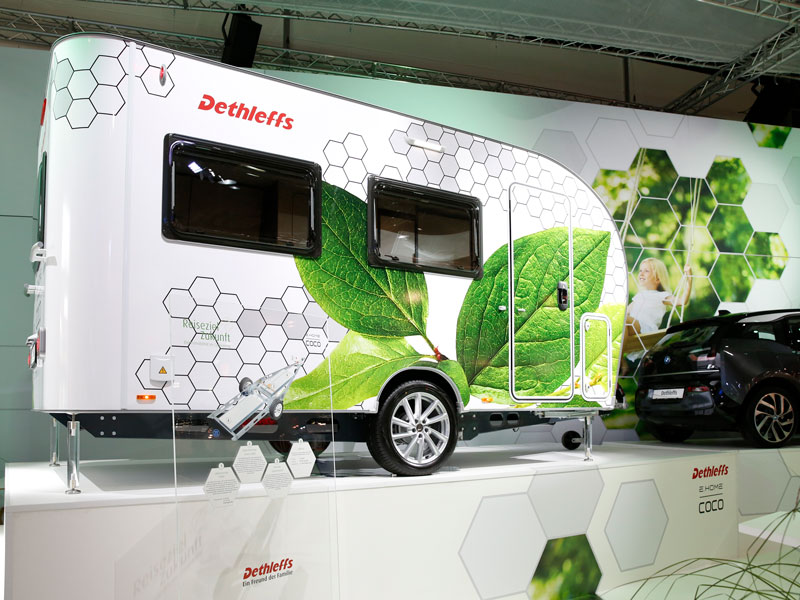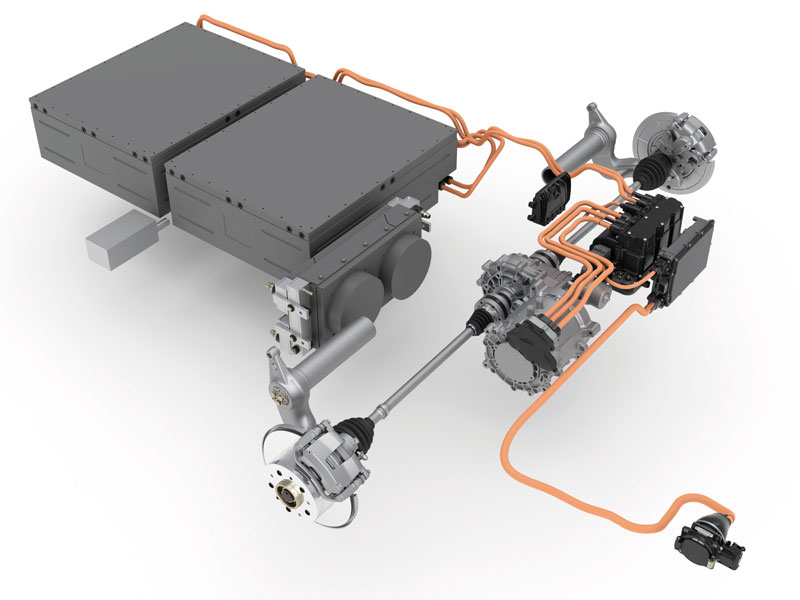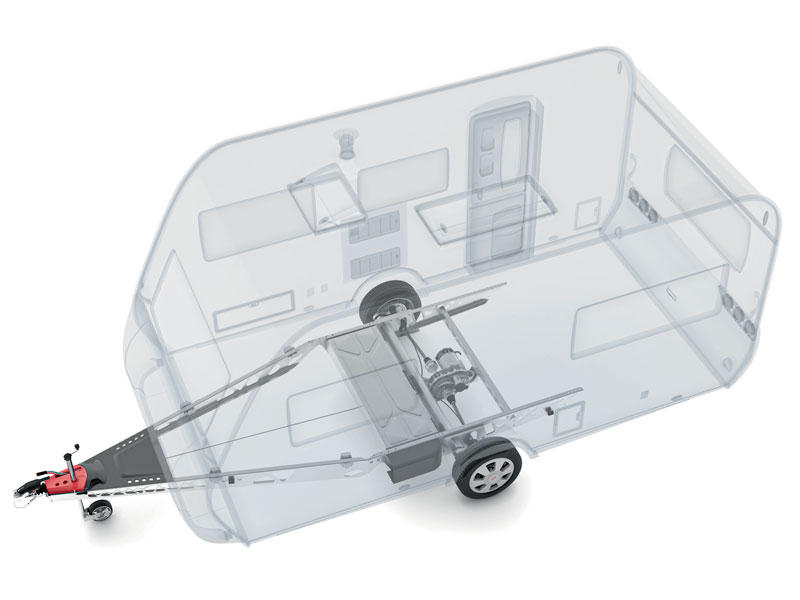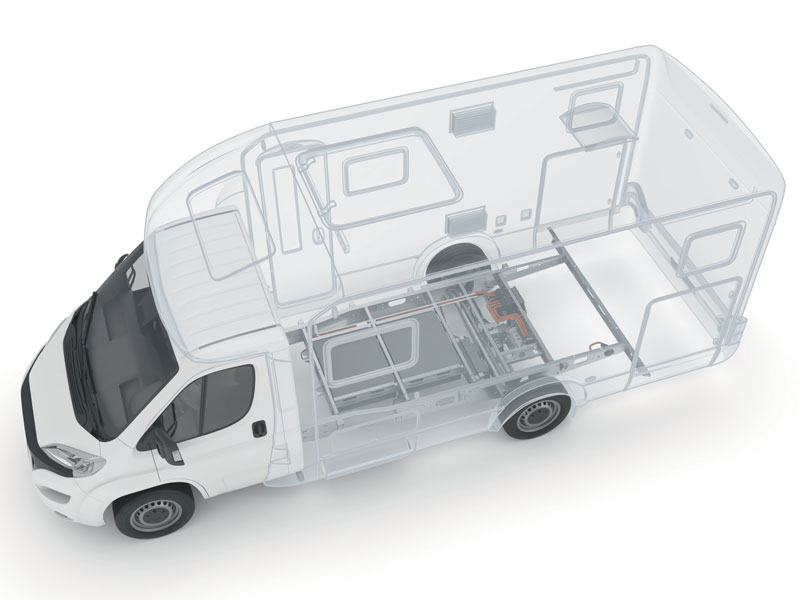At this year’s CMT Stuttgart - southern Germany’s largest caravanning and motorhome show - AL-KO and its partner Huber Automotive, under the ‘E-Mobility Range’ banner, released two markedly different concept chassis. One was for caravans, the other for motorhomes, and both were battery-powered electric-drive chassis.
Environmentally friendly and fuel-efficient, both the Hybrid Power Chassis (HPC) and the Next-Generation Caravan Platform (NGCP) illustrate what is possible with state-of-the-art electrical-drive technology.
Hybrid-Power Chassis
European/British motorhome manufacturers building on the Fiat Ducato platform currently have the option of using AL-KO wide rear-axle chassis in place of Fiat chassis. Soon, they will have the option of fitting the AL-KO HPC in place of the Fiat one.
Based on an AL-KO lightweight chassis, the HPC includes either one or two modular battery packs (each with a 50km range) as well as electric drive (e-drive) components that include an electrical rear axle with a peak power output of 90kW. That output seems modest, but with Ducato motorhome engine options starting at 88kW, the HCP effectively doubles the available power.
Used in hybrid mode (e-drive), with the onboard management system determining the output from each power source, (internal combustion engine or electric motor), fuel savings and CO² reduction of up to 30 per cent can be achieved as well as improved acceleration.
A bonus is the 4 x 4 traction available in hybrid drive, evaporating the Ducato driver’s fear of wet grass. And another EV-driver fear - running out of battery power - doesn’t apply as the internal combustion engine is there in support if the battery runs low.
The battery is charged either by regenerative braking or by connecting the built-in charger (standard 7kW or optional 22kW) to mains power. It also replaces the RV house battery, providing the opportunity for a greater range of home appliances to be used aboard.
Towards the end of 2020, once the certification process is completed, the Hybrid Power Chassis will be available to all Euro/British motorhome manufacturers. It will be interesting to see which ones take up the challenge.
Next-Generation Caravan Platform
At the 2018 Dusseldorf Caravan Salon, Dethleffs introduced an e.home version of its small, stylish Coco caravan. Powered by dual 40kW electric motors and fitted with an 80kWh lithium battery, it paved the way for self-powered caravans. So the release of AL-KO’s powered caravan platform at CMT Stuttgart seems a logical step on the road to a commercially viable next-generation caravan platform.
Why build an electrically powered trailer/caravan?
Towing diminishes the range of the towing vehicle, by up to 70 per cent if it is an EV. Electrically powered trailers reduce the load on the towing vehicle, providing emission-free range support, making them ideal for the task. The demand for self-powered trailer/
caravans will increase along with the demand for EVs.
This prototype has a GVW of 3175kg, a 48-volt drive and a 10kW (optional 30kW) battery. This drive system actively supports the tow vehicle, increasing its drive range regardless of whether it is an internal combustion engine or electrically powered.
Other benefits
The drive train incorporates its own anti-snaking and torque vectoring systems. The electric drive powers or decelerates the wheels individually, meaning the trailer/caravan can be stabilised in dangerous situations without any action on the part of the driver. Note, too, that loading conditions and environmental influences are taken into account.
Brake (regenerative) and over-run energy can be recovered and stored in the trailer chassis battery for later use, supporting the tow vehicle. The regenerative process, a comfortable form of braking when travelling downhill, also reduces wear and tear on both vehicles’ braking systems.
The battery also doubles as an off-grid camp power source for equipment such as electric refrigerators, lighting and cooktops. When needed, the battery can be charged by plugging the built-in charger into the grid. No need for motor-movers either.
In ‘self-propelled’ mode, using a phone app, the NGCP can be moved to wherever it is needed with a minimum of fuss. Closer to home, Australia’s OzX Corp is testing a prototype self-powered chassis it plans to make available for sale as soon as next year. Perhaps we will see that one first?
Find motorhomes for sale in NZ 









